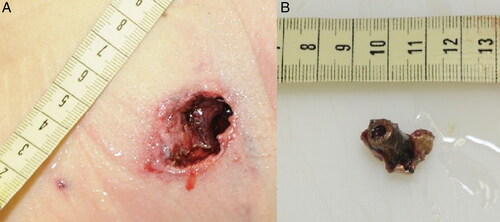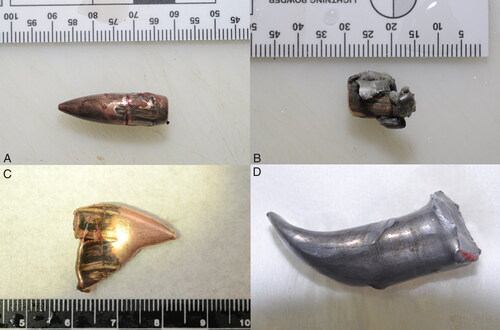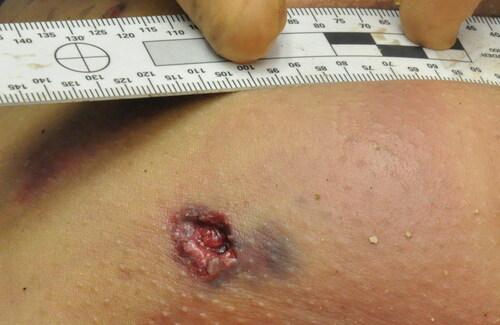Figures & data
Figure 1. Photograph showing a projectile that had impacted intermediate obstacles before skin entrance (B), and the resulting irregularly-shaped skin wound (A).

Figure 2. Photograph showing an irregularly-shaped skin wound (A) caused by shrapnel-like projectiles (nuts) (B) found near the shallow orifice.

Figure 3. Photographs of representative ballistic entrance wounds. The projectile penetrated the skin laterally (A and C). The projectile penetrated the skin without deformation (B) and a deformed projectile penetrated the skin, causing an irregularly-shaped wound (D).

Figure 4. Photograph showing deformed projectiles that encountered multiple intermediate obstacles before penetrating the body. Full metal-jacketed bullet (A). Flattened bullet (B). Deformed jacket without core (C) and core without jacket (D).

Figure 5. Photograph showing numerous skin wounds caused by blunt impacts with disruption and penetrating soft tissue wounds on a victim’s upper limbs (A and C), with multi-fragmentation associated fractures visible in the X-ray image (B).

Table 1. Classification and types of blast injuries [Citation6–8].


